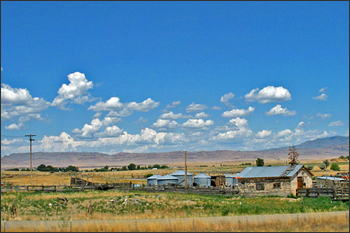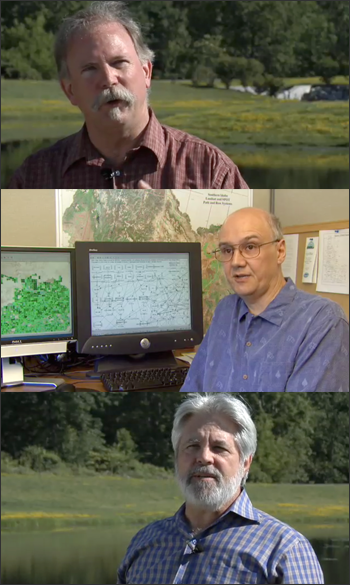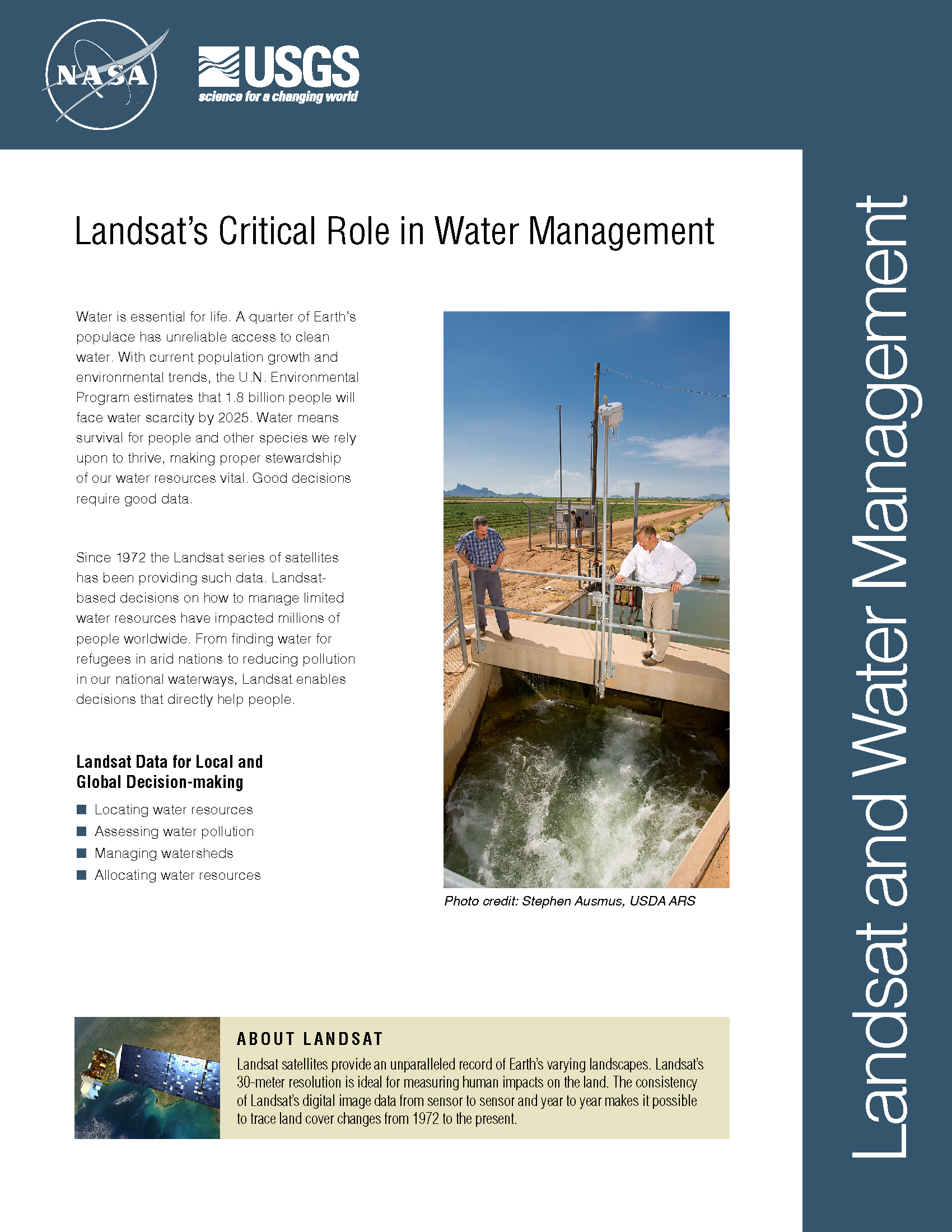Landsat’s Role in Managing Water Resources
Water is essential for life. A third of Earth’s populace has unreliable access to clean water. With current population growth and environmental trends, the U.N. Environmental Program estimates that 1.8 billion people will face water scarcity by 2025. Water means survival for people and other species we rely upon to thrive, making proper stewardship of our water resources vital. Good decisions require good data. Since 1972 the Landsat series of satellites has been providing such data. Landsat-based decisions on how to manage limited water resources have impacted millions of people worldwide. From finding water for refugees in arid nations to reducing pollution in our national waterways, Landsat enables decisions that directly help people.
Landsat Images Offer Clearer Picture of Changes in Chesapeake Watershed
• Images taken from satellites more than 400 miles above the Earth’s surface are bringing land-cover changes throughout the Chesapeake Bay watershed into tighter focus. The images, which capture tracts

Water Watchers
Landsat doesn’t measure water vapor directly, but evaporating and transpiring water takes energy, something Landsat does observe. If they knew how much energy was going into driving evapotranspiration, Morse and Allen could estimate how much water a particular field of crops had consumed on any particular day.

Landsat-Based Water-Use Mapping Method Hailed as an Important American Government Innovation
In the dry Western states, where irrigated agriculture accounts for 86% of all water consumption, the water-use (evapotranspiration or ET) information provided by METRIC is critical for arbitrating increasingly common water-resource conflicts.
Landsat Used to Map Persian Gulf Coral Reefs
Contributor: Rashmi De Roy, World Wildlife Foundation In 2006, the WWF helped prepare the first map of coral habitats in the southeastern Persian Gulf, highlighting some of the most extensive
USDA Researchers Use Landsat to Estimate Horticultural Canopy Cover and Crop Water Demand
Horticultural crops account for almost 50% of crop sales in the United States, and these crops are carefully managed to ensure good quality. But more information is needed about the
Landsat’s Role in Chesapeake Bay Management
Four hundred years after Smith’s famous surveying expedition, North America’s largest estuary exhibits signs of stress and its once legendary seafood productivity has waned.

